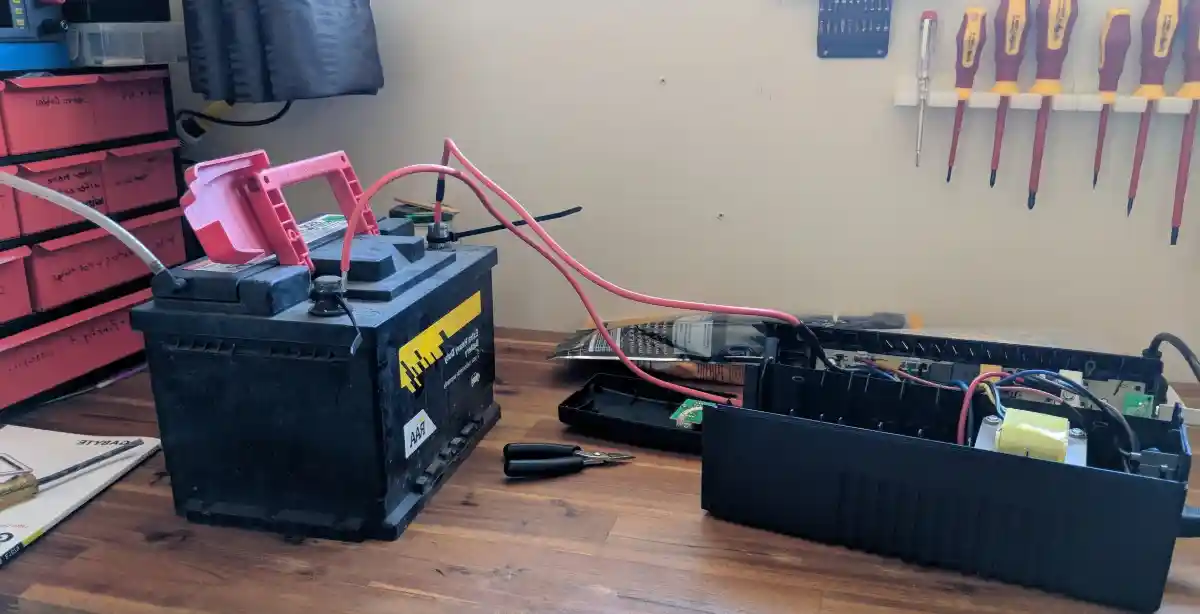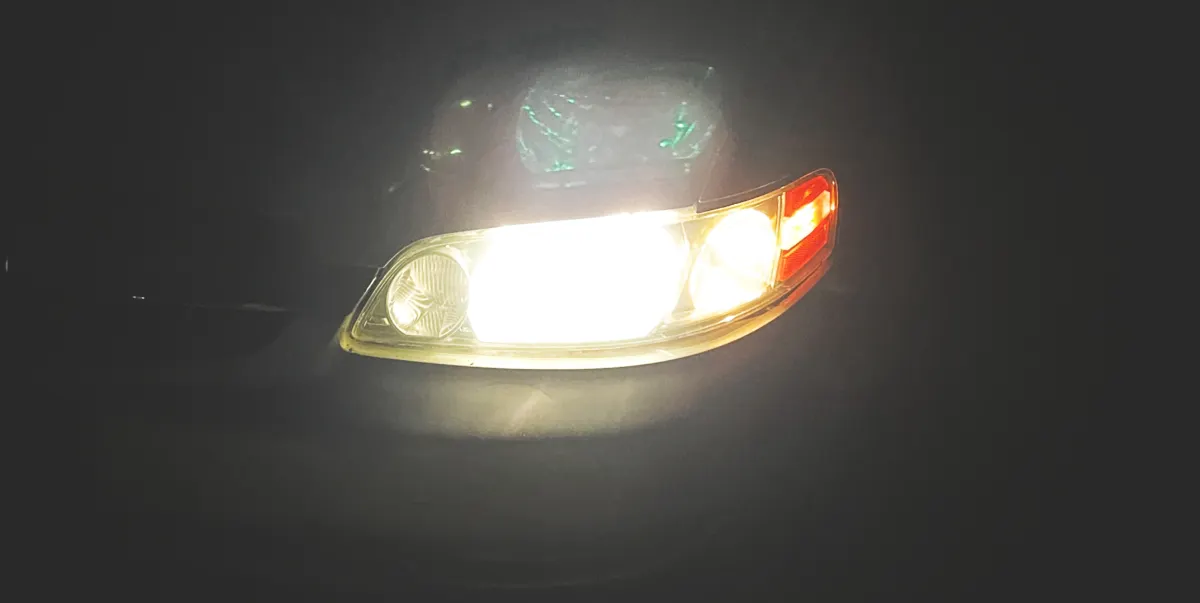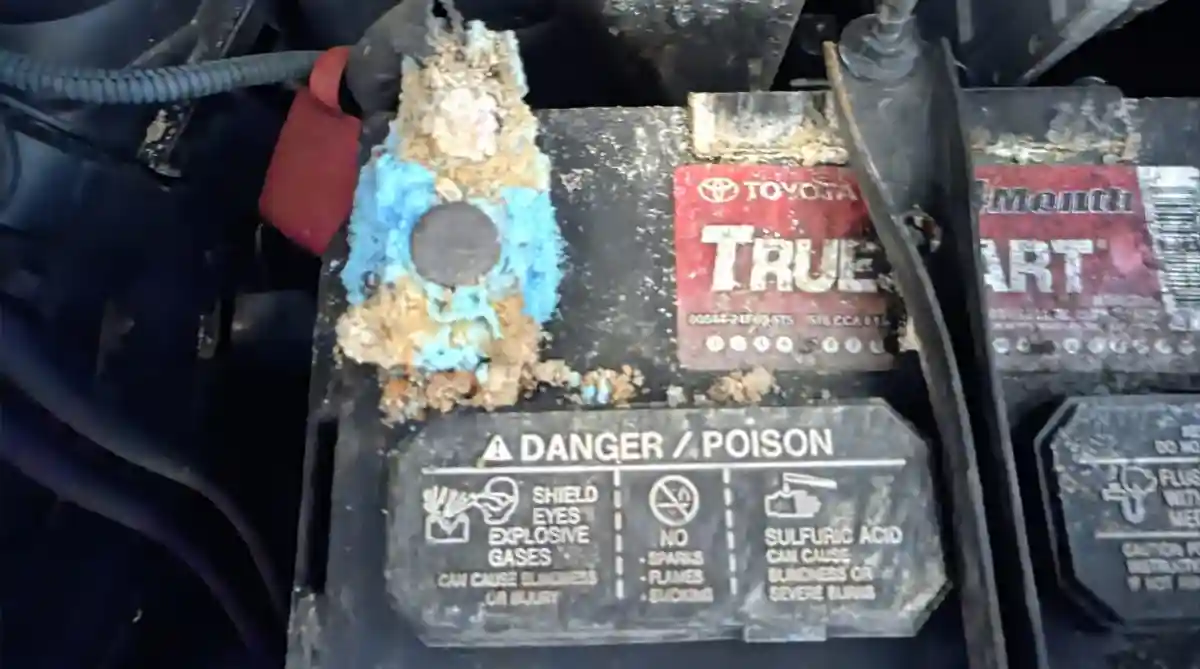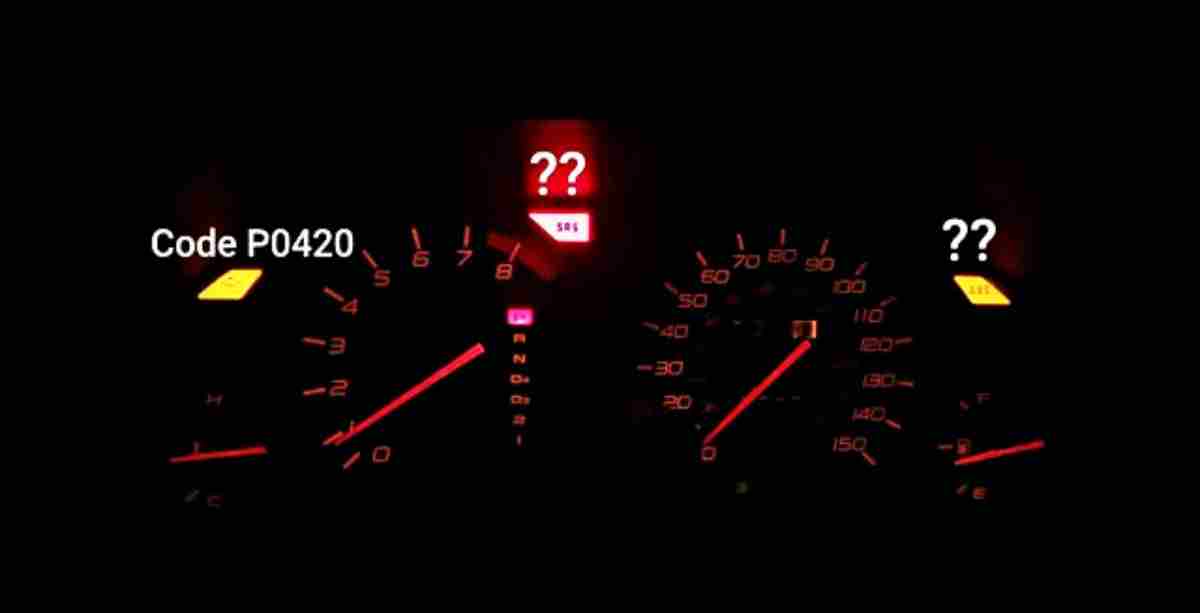Have you ever found yourself rushing to work or school, only to discover your car refuses to start? Although a quick jump-start could save the day, you want to know if car battery needs to be replaced to replace your battery preemptively and avoid problems.
When you can tell the warning signs of a dying battery, that alone can be a lifesaver. And in this post, you will discover the key indicators that it might be time to invest in a new car battery.
How to Know if Car Battery Needs to Be Replaced

1. Battery Fails to Cope with Seasonal Challenges
With the onset of the sweltering summer, you might notice your battery struggling to keep up. This is due to the heat accelerating the evaporation of water in the battery’s internal fluids, which can lead to internal corrosion.
In contrast, winter slows down the chemical reactions in your battery, depleting its energy. Your car demands more power to start because of sluggish engine oil. While newer batteries can handle severe weather with ease, an older battery might falter under these extreme conditions.
2. Electrical Issues
You know if car battery needs to be replaced when your power windows or door locks don’t operate as smoothly as they usually do. Similarly, issues with your car’s stereo or electric seats might also suggest a problem with the battery.
The battery is responsible for powering all electrical components in your vehicle, including charging your phone.
As the battery weakens, it loses its capacity to efficiently power these components. Conduct a test on all electronic aspects of your vehicle to check their functioning. Any anomalies concerning the electrical parts warrant immediate inspection. Hence, you have to visit a nearby auto repair shop promptly.
Just in case, consider how many electricity-powered components you use frequently and when you last replaced the battery. The higher the electricity consumption, the faster the battery will deplete.
3. Slower Window Operation

Everything might appear fine when you start your car; the engine runs smoothly, and the dashboard lights are bright. However, a test to roll down your windows with the engine off could reveal otherwise. Do they take a long time to move? This could be a subtle indication that your battery is nearing its end.
Nevertheless, note that a dying battery isn’t the only reason for slow-moving windows. Other culprits could be a faulty window motor, damaged track guides, or a deteriorated window regulator.
If your windows take their time rolling up or down and you notice other signs from this list, a battery replacement is probably in order.
4. Dim Headlights at Idle

As your battery weakens, the impact will be felt across all your vehicle’s electrical components. You know if car battery needs to be replaced when you observe your headlights dimming while your car idles and brightens when you accelerate.
Replace the battery promptly once you notice your headlights behaving this way. Faster action on your end can prevent an inconvenient situation where you’re left stranded and in need of a jump-start. However, if your headlights are dim while accelerating or braking, the issue might not be with your battery. It could be a malfunctioning alternator or a worn-out alternator belt.
5. Visible Corrosion on Battery Terminal

A glance under your car’s hood should reveal a clean battery. A small amount of build-up is typical, but excessive corrosion should not be present. Corrosion can result from leaking battery fluid, escaping gases, or simply an old battery.
No matter what causes the corrosion, addressing it promptly is crucial. Generally, a granular build-up indicates a need for battery replacement, particularly if the battery is more than five years old.
6. Battery Age
Another indicator that your car battery may need replacement relates to its age. Car batteries typically have a lifespan of about 4 years, although some can last up to 6 years. However, factors like weather conditions and driving habits could reduce this lifespan.
As your battery nears the three-year mark, it’s a good idea to get it tested at a local automotive store. These tests are usually offered free of charge and provide an estimate of the remaining battery life. If the results suggest that your battery requires replacement, the good news is that you’re already at the store.
7. Your Car Has Been Idle for Too Long
Leaving your car unused for an extended period, like while you’re on a long trip, might result in a dead battery upon your return. Your battery’s condition is closely tied to your driving habits.
Contrary to what you may believe, driving frequently is beneficial for your battery as it recharges during operation. Therefore, allowing your vehicle to remain inactive for prolonged periods can deplete its battery life. If you’re quarantining out of town and your car is sitting idle, arrange for a roommate, friend, or neighbor to take it for a spin now and then to keep the battery in check.
8. Your Vehicle Is Hesitant to Start
Have you observed a delay in your engine’s starting time? Or perhaps flickering lights or unusual sounds when you turn the key? These are symptoms to know if car battery needs to be replaced, as well as an impending battery failure. Avoid being caught off-guard and take your vehicle for a starting system inspection or battery replacement.
9. Unusual Smell
An unexpected, peculiar smell inside your car could signify a failing battery. A rotten egg-like stench often signals a gas leakage from the battery.
Car batteries hold sulfuric acid, which could leak if the battery gets damaged. This process, known as outgassing, can be hazardous and cause corrosion or other damages to your car, necessitating immediate battery replacement.
Repairing the harm caused by these destructive acids to other car parts can be significantly more expensive than replacing the battery. While it’s not a common indicator, any unusual smell should prompt you to take your car to your local auto maintenance garage without delay.
10. Your Aged Battery Triggers a Dashboard Light
Wouldn’t it be convenient if your car could communicate when it’s time for a battery replacement? Luckily, most cars do exactly that. Your dashboard battery light is engineered to light up when it detects a problem with the battery or starting system.
If that doesn’t work, you can use the battery’s age as a benchmark for when it might need replacing.
On average, car batteries last three years, though factors such as the brand of your battery, type of vehicle, local climate, car maintenance, and driving habits can influence this lifespan.
Other Causes of Starting and Battery Problems
Are you grappling with starting troubles even after a new battery installation? Does your new battery seem to be draining prematurely? Is jump-starting your car becoming a risky ordeal? These issues might hint at problems that extend beyond a simple dead battery:
1. Alternator Problem
The alternator of your car is tasked with recharging your battery while you’re on the move. If your newly replaced battery dies swiftly, it could point towards alternator malfunction.
2. Faulty Battery
On the other hand, a rapidly draining battery after replacement could be indicative of a defective battery. Though unusual, it does happen occasionally. Fortunately, if this occurs, you’re likely to be protected by a warranty, especially if you’ve opted for an expert mechanic’s services.
3. Battery Drain
Are you ensuring the longevity of your battery? Negligences like leaving lights on or keeping chargers plugged in could be slowly killing your battery.
4. Starter Hitches
As the name implies, the car’s starter is crucial for initiating your vehicle’s operation. If there’s a problem with the starter, your car won’t crank, even with a fully charged battery.
Starting tests and vehicle diagnostics can help identify the root cause of your vehicle’s issue. A mechanic can then collaborate with you to devise a suitable repair strategy to restore your car’s functionality.
How to Test a Car Battery
Now that you know if car battery needs to be replaced, you want to test the car battery. You can assess your car battery’s health either at home or at an auto service center using a multimeter. Alternatively, for those with a DIY streak, multimeters can be purchased online for around $10, and you can carry out the battery test at home. So, how does one use a multimeter to test a car battery?
Begin by setting the multimeter to 15-20 volts. Then, connect the multimeter to the battery’s positive and negative terminals, and read the voltage output.
Your vehicle’s owner’s manual should provide detailed information on the expected battery voltage. Generally, you should be aiming for roughly 12.6 volts. If the reading indicates less, it might mean your battery is defective and needs replacing.
As batteries age, they lose their ability to retain an electrical charge. This can lead to noticeable issues, especially when trying to start your car.
If you’re worried about your battery’s longevity, be attentive to signs like an engine that hesitates to start or overhead lights that flicker upon ignition. If you observe these symptoms, it’s a strong hint your battery is declining, and replacement may be imminent. You might want to get your battery professionally tested for confirmation.
Steps to Buy a New Car Battery
The battery serves a vital role in your vehicle’s electrical system, making it crucial to select the right replacement when needed. However, car batteries are not one-size-fits-all, and choosing the correct one can be puzzling. So, what factors should you consider when it’s time for a battery change?
Step 1
The new battery must fit snugly into your car’s battery tray as sizes can vary. Refer to your owner’s manual for specifications on battery size.
Step 2
You need to ensure that the battery you choose has the necessary power to meet your vehicle’s demands. Check your owner’s manual for the recommended cranking amps (the energy required to start your vehicle’s engine) and select a battery accordingly.
Step 3
If you reside in a cold climate, the battery’s cold-cranking amps, which measure the energy needed to start the engine in freezing conditions, become vital. This could be the difference between your car starting or dying on a chilly winter morning.
Step 4
You must decide between a maintenance-required and a maintenance-free battery. Though a maintenance-required battery, which needs regular checks and topping up of electrolyte levels, is initially cheaper, maintenance-free batteries offer convenience by requiring little to no upkeep. If you choose the less expensive option, be prepared for the necessary maintenance commitment.
Picking the Right Car Battery
Car batteries come in a variety of types and sizes, which can complicate the selection process. Here are the key points to consider when it’s time for a battery replacement:
| Compatibility | Your new battery needs to fit perfectly into your vehicle’s battery tray, which may vary in size. Refer to your owner’s manual for specifications on battery size. |
| Power Requirement | Ensure that the battery you choose has adequate power capacity for your vehicle. The owner’s manual will indicate the right number of cranking amps (the power necessary to start your vehicle’s engine). Select a battery that aligns with these specifications. |
| Cold-Cranking Amps | Consider the cold-cranking amps, which are the power necessary to start the engine in freezing temperatures, especially if you live in a colder region. This could determine whether your vehicle starts or stalls on a frigid winter morning. |
| Maintenance Type | Decide between a maintenance-required or a maintenance-free battery. The former, requiring regular checks and electrolyte refills, is cheaper upfront but demands more attention, while maintenance-free batteries require minimal care. Consider the commitment before opting for the cheaper variant. |
How to Replace a Dead Car Battery Yourself
Replacing a dead car battery is a task you can comfortably accomplish at home, although professional help is always an option. If you opt for the DIY path, bear the following safety measures in mind:
- Refer to your owner’s manual for any safety instructions.
- Always use gloves and eye protection to prevent battery acid contact.
- Always disconnect the negative terminal before the positive one.
- Never let a metal tool come into contact with the battery posts or terminals.
- Be cautious of sparking both from and around the battery.
Guided by these precautions, here are steps on how to replace a dead car battery:
1. Turn Off the Engine
Switch off the engine and place your vehicle in park. It may seem self-explanatory, but it’s a crucial initial step.
2. Disconnect the Negative
you need a wrench or special battery pliers to detach the battery’s negative cable. Clean away any corrosion impeding this with a baking soda-water solution or a car-safe lubricant. Remove the cable with a gentle pull and twist. If necessary, use a battery terminal puller tool to avoid damaging the terminal.
3. Disconnect the Positive
Repeat the steps used for the negative cable on the positive cable. Note that the positive terminal may be under a red plastic hood, and if your cables aren’t color-coded, mark the positive cable with tape or a twist tie.
4. Unfasten the Battey Clamp
The battery clamp secures the battery. Loosen it using a wrench or socket. The clamp usually comprises three parts, independently mobile. If stuck, move the sidearms of the clamp to free them, then the whole clamp should come off easily.
5. Remove the Dead Battery
Prepare a level, dry surface to place the old battery before lifting it from the car. Remove the dead battery and clean the space left behind to welcome the new battery.
6. Clean the Corrosion or Residue
Use a baking soda-water solution or car-safe lubricant and a clean cloth or wire brush to clean the tray, battery posts, or battery connector. For stubborn corrosion, use a battery cleaning solution.
7. Install the New Battery
Place the new battery securely in the tray. Attach and tighten the clamp to ensure the battery is firmly held in place.
8. Reconnect the Positive
Reattach the cleaned positive cable to the positive battery post and tighten it securely.
9. Reconnect the Negative
Reattach the negative cable similarly, ensuring firm connections without any movement.
10. Verify All Connections
Ensure the terminals are tight against the posts for a strong connection. Any wiggle in the cables may need further tightening to avoid starting issues, low voltage, or flickering headlights.
Remember, car batteries cannot be thrown away due to their high acidity. They must be recycled correctly. Many auto shops, parts stores, and car dealerships, including Bridgestone retail stores like Firestone Complete Auto Care, Tires Plus, and Wheel Works, offer free battery recycling. However, it is advisable to call ahead and confirm.
Contact Your Local Tire Battery Replacement and Maintenance Services
If you’re encountering battery-related difficulties, your local professionals can assist you. Most service centers are open and ready to serve in your community, offering curbside services and complimentary pickup and delivery for the safety of our customers and employees.
Moreover, if you’re anxious about driving a vehicle with a potentially compromised battery, mobile mechanics will come to you. Just schedule an appointment and get your new battery installed ASAP.
Read also: ATV Battery Not Charging While Running Fixed

![15 Symptoms of a Bad PCV Valve [Diagnosis, Fix & Replacement Cost] 15 Symptoms of a Bad PCV Valve [Diagnosis, Fix & Replacement Cost]](https://sanedriver.org/wp-content/uploads/2022/11/PicsArt_11-10-08.53.05.jpg)
![How to Fix Reduced Engine Power [Complete Guide] How to Fix Reduced Engine Power [Complete Guide]](https://sanedriver.org/wp-content/uploads/2023/02/PicsArt_02-10-06.22.51.webp)